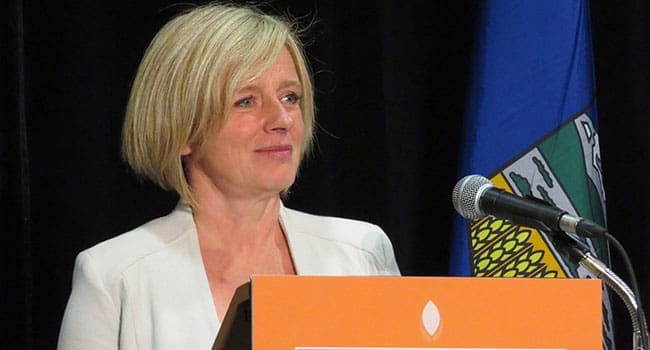By Ben Eisen
and Steve Lafleur
The Fraser Institute
Alberta’s recent speech from the throne laid out the Notley government’s vision for the upcoming legislative session.
In doing so, the government rightly noted that Alberta’s big deficits are partly the result of spending increases by successive governments over the past 15 years. The government’s acceptance of reality – that spending growth is a major source of Alberta’s fiscal mess – is a positive development.
Less encouraging, however, was the government’s claim that it has already addressed the problem of unsustainable spending growth, congratulating itself on “cutting the growth of government spending” and “stopping the practice” of big government spending increases.
These claims do not withstand scrutiny.
This fiscal year, 2016/17, is the Notley government’s first year in full control of provincial finances. So what’s happened to spending? The recently released fiscal update shows program spending (all spending minus debt interest payments) up nearly 10 percent from last year’s level.
It’s important to recognize that this big increase was driven partly by factors outside the government’s control since program spending includes costs of responding to the wildfires in Fort McMurray. And this year’s spending total is also inflated somewhat by the fact that the full costs of the coal power phase-out, which will take place over 14 years, is being recorded as an expense in this year’s budget.
But even stripping out these factors, there’s still a significant spending increase this year of about five percent on regular day-to-day expenses such as the wages and benefits of public-sector employees.
So, the big question is, does this represent a slowdown in the rate of government spending as the government suggests? The answer, quite simply, is no. In fact, the government has increased spending considerably compared to the rate that has prevailed since the end of the 2008/09 recession.
Consider that between 2010/11 and 2015/16, program spending in Alberta increased at an average annual rate of 3.3 percent. That’s substantially lower than the spending increase in Alberta under the NDP government this year.
Of course, the throne speech rightly notes that some recent Alberta governments, particularly in the first decade of the century, increased spending rapidly. In fact, some years spending increased by 11 percent annually. However, the annual increases started to slow approximately seven years ago – not just now, under the current government, as the speech from the throne suggests. In fact, the rate of spending growth ticked up this year and is significantly above the average annual rate since 2010/11.
To be clear, none of this is to applaud the fiscal management of previous governments. The slowdown in spending growth following the 2008-09 recession was not adequate to deal with the fiscal problems facing the province. Since then, successive governments failed to reform and reduce provincial spending to undo some of the damage caused by the unsustainable spending growth of previous years. The result has been a nearly uninterrupted string of deficits and fast-growing government debt.
Nevertheless, the fact remains that the annual increases in government spending started to slow approximately seven years ago. And in reality, the Notley government has significantly increased the rate of spending growth.
The throne speech was right to recognize that unsustainable spending increases are an important cause of the province’s fiscal problems. It’s dead wrong, however, to suggest that this government has already addressed the problem.
Ben Eisen and Steve Lafleur are analysts with the Fraser Institute’s Alberta Prosperity Initiative.
Ben and Steve are Troy Media contributors. Why aren’t you?
The views, opinions and positions expressed by columnists and contributors are the author’s alone. They do not inherently or expressly reflect the views, opinions and/or positions of our publication.




